British Armed Forces recently joined forces with 10 NATO partner nations in Estonia for Exercise Spring Storm, a significant military exercise aimed at bolstering NATO’s battle readiness.
The exercise involved 14,000 land, sea, and air personnel from countries including the UK, Estonia, Canada, Denmark, France, Germany, Italy, Latvia, Lithuania, Poland, and the United States.
They engaged in a range of multi-domain training scenarios designed to strengthen military interoperability and responsiveness.
British troops, including the 7 Light Mechanised Brigade Combat Team (7LMBCT) HQ, Light Dragoons Battlegroup (LD BG), and the Queen’s Royal Hussars Battlegroup (QRH BG), rehearsed reinforcing an enhanced Forward Presence Battlegroup (eFP BG) to brigade level strength.
The exercise was divided into three phases, comprising field training, live firing exercises on land and in the air, and a maritime beach assault. Royal Marines from X Company, 45 Commando, played a significant role in the maritime assault, launching from the Royal Navy’s HMS Albion.
The troops were subjected to an array of challenging battlefield scenarios across the Estonian terrain. These included trench assaults, reconnaissance missions, light infantry tactics, armoured manoeuvres, and combined arms warfare.
The exercise incorporated peer-on-peer training, which enabled, for example, “the reconnaissance capabilities of the LD BG to be tested against the heavy armour of the QRH BG, and vice versa.”
Equipment utilised in the exercise included Challenger 2 tanks, Warrior and CV90 Infantry Fighting Vehicles, Caesar self-propelled howitzers, British Guided Multiple Launch Rocket Systems, and US High-Mobility Artillery Rocket Systems.
Air units also partook in comprehensive training under Op Peleda and Op Azotize, with the UK deploying four Wildcat, five Apache, and three Typhoon aircraft for reconnaissance and live firing drills to facilitate land-air integration.
Lieutenant Colonel Jonathan Harris, Commanding Officer of the Light Dragoons, remarked on the significance of the exercise: “Having trained hard across a large swathe of eastern Estonia we understand the challenges and opportunities the terrain presents, and we are well prepared to deploy there again if necessary…we fought as an invading force might so we could be the best possible sparring partner for Estonia and its NATO allies, which taught both the defending forces and us a lot about how to fight and win on that ground.”


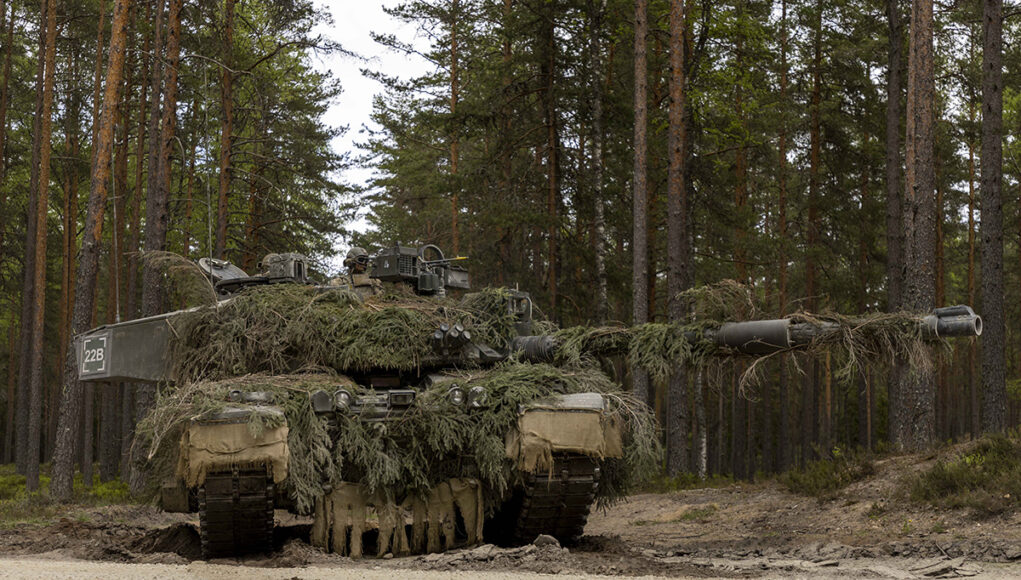




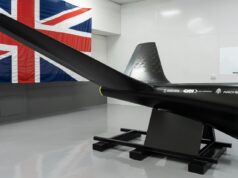
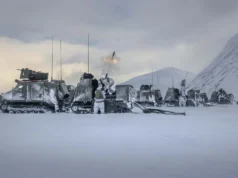

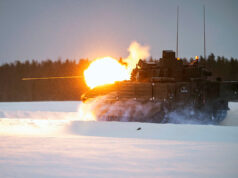

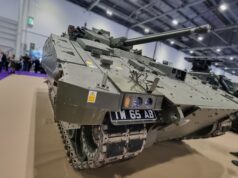

Great picture of Challenger 2 looking ready for a fight ,just wish we had more OOps there I go again . 😀
Good to see the UK can keep the Russians at bay for a couple of hours, with thier single tank.
Q: How do you stop a Russian tank?
A: Shoot the soldiers pushing it.
Q: What do you call a Russian tank brigade returning from Ukraine?
A: An infantry section
Q: “What’s the difference between a Russian tank and a Hoover vacuum cleaner? “
A:”The Russian tank has 3 dirt-bags in it.”
Q: Why is the music of ‘the Clash” banned in Russian tanks in Ukraine?
A: Because the Russians don’t need to be reminded that when they fight the LAWs, the LAWs win
Q: Why do Russian tanks have rear view mirrors?
A: So they can watch the Ukrainian tractors gaining on them!
Q: How did the father reply when his son asked him, what does the Z stand for on Russian tanks?”
A: “You’ve heard of Plan A and when that fails, you go to a Plan B they’re on Plan Z already.”
Q: How long does it take a Russian tank to drive from Moscow to Kyiv?
A: Depends how many people are pushing.
Q: How do you get all those Russian tanks out from the mud?
A: Ukraine them out.
Q: You know what never gets old?
A: Russian tank drivers
How do you stop a UK tank? You can’t, there aren’t any.
227 at the last count. Where do you get your info…or your jokes!
Sorry Graham but only 148 are being upgraded. The rest are already being retired.😢
Not all mate. I understand plenty are in storage.
You reckon we’ll ever :wpds_arrow: see them again?
Hi Geoff, I was talking about the present rather than the future.
We are still declaring 227 for CFE etc.
O.K. but as I just said to Danielle…ever to be seen again? Even allowing for my Navy orientation I think we should upgrade the rest, another 48 at least.
Oh dear you have been put to bed by a grown up, night night!
The Kremlin mole tries to strike back but typically fails.
Farouk roasted you. His jokes were soooooooooo much funnier.
No 5 especially good. Not seen much of the UKR Tractor Bdes of late?
I miss all the tractor tales of old. Happy memories.
I think as the front lines have become static it is not really possible anymore, unless Farmers behind the lines use them to raid Russian depots!
Twitter had some hilarious material. Do you recall when Finland applied to join NATO and Putin threatened a response, and the Fins deployed Tractors to the border!! 😆
https://i.postimg.cc/Kj4T2Q9L/277582094-115594831084446-1699732673420534031-n.jpg
😂🤣😂🤣 keep them coming
Jackoski wrote:
You were saying :
https://i.postimg.cc/V69wNchP/Fvr-BFXNa-AAAsh-Xe.jpg
Mmm Jackoski???
Anybody called Frost in the army was automatically referred to as Jack
Point of order you could have called him jackski😄
Jacko wrote:
“Point of order you could have called him jackski😄”
I could have simply refered to the troll as Jacky alluding to the song Jacky by Marc Almond who spent a couple of years learning Russian songs in Moscow, but I won’t want to associate my love for such a wonderful song for a Sexdwarf with a Chip on his shoulder living out his life in a Bedsitter watching reruns of his Tainted love for the Days of Pearly Spenser
👍
Prighozin stumbling drunkenly out of the crowd at the 9 May Parade
“SHOIGU! WHERE IS THE AMMUNITION! IT’S IN YOUR TRUNK I KNOW IT!!!”
Brilliant mate…and the Russian tank shown is at least 80 years old.
“Thier”?
Oh dear.
? Think we have two sqns in Estonia (ie 28 tanks) – and have gifted 14 tanks to Ukraine. So how do you get a ‘single tank’?
Ah I see age and cognitive restrictions have been lowered to allow for the less able! Nice!
In all seriousness, Armata, Lepoard, Chally etc etc. All vulnerable. All promote stagnant warfare. All obsolete. The future, as being proven in this war is, drones, network centric intelligence sharing and non-linear tactics this has been the key to Ukraines persistence. Not tanks.
Good luck clearing trenches with cyber.
Combined arms works when it is conducted properly. It’s not being conducted properly by either side in the Ukraine conflict, frankly due to a lack of equipment and skills.
Neither has really fought the air war as expected, especially Russia.
SEAD/DEAD operations prior to this kind of counteroffensive are crucial to allow continuing air cover of advancing forces and suppression of artillery and other enemy positions etc.
What you are seeing is WW2 tactics with modern day weapons. This isn’t how it would play out if the US/NATO had stuck it’s boot in.
The level of destruction that would’ve been inflicted on Russian advances in the first days of the war would’ve been devastating. Think Iraqi ‘highway of death’ x 100.
Tanks still have their place. But it is the job of the other branches to get that main gun in a position to do its damage.
There is an argument for lighter more mobile tanks (see latest US 105mm iteration) as opposed to 60 tonne bastards, but then the argument between of wheels vs tracks kicks in (think Stryker).
Everything on the battlefield is vulnerable to something. There exists one or more counters to everything. So what?
If tanks were obsolete, don’t you think most, if not all nations, would have scrapped them? Why are countries keeping tanks, upgrading them and replacing them with new fleets?
BTW, aren’t your fabled drones rather vulnerable!
Wrong, so wrong it’s quite funny!
I feel for the Ukranians, who see their oppos coming back, having had Leopards and M2’s blown up from under them, still in one piece, and sending the recovery vehicles out, and then have to turn to their BMP’s and T-80’s and climb in them knowing that if the same happens to them they’ll be treated to the finest of Russian designed turret launching devices.
That is a very good point indeed😳
Q What’s the difference between Russians and a piece of toast ?
A You can make soldiers out of a piece of toast
Its been reported that Russian Maj. Gen. Sukhrab Akhmedov was to give a rousing speech to Russian troops based on the Kreminna front. For some strange reason he was late and so hundreds of Russians soldiers congregated for 2 hours in the same spot (Huge mistake) and when the Ukrainians found out they hit the area with a strike killing around 100 and injuring another 100. They never learn
https://i.postimg.cc/7LLkHqtT/Opera-Snapshot-2023-06-14-190725-twitter-com.png
Great that we have two BGs plus a bde HQ (plus supporting elements etc) in Estonia on eFP duties. How long can we keep that level of effort up?
You and I know the answer mate, and the consequences if we do.
3 massive bangs in Crimea last 16 hours Russian assets blown up Shadow storm ?